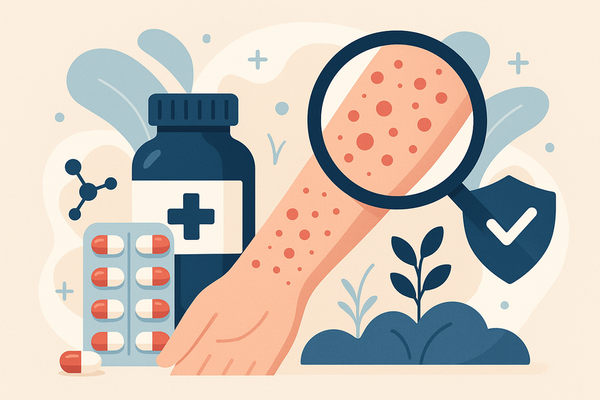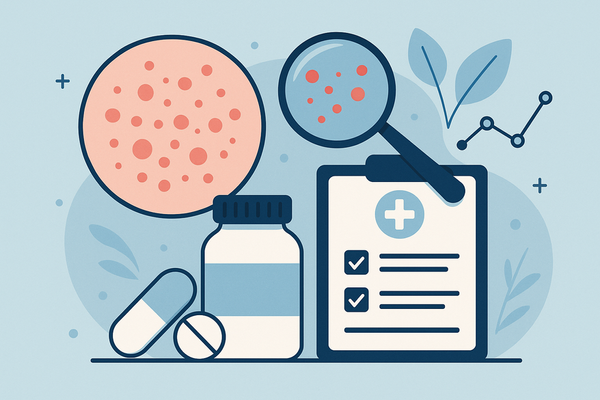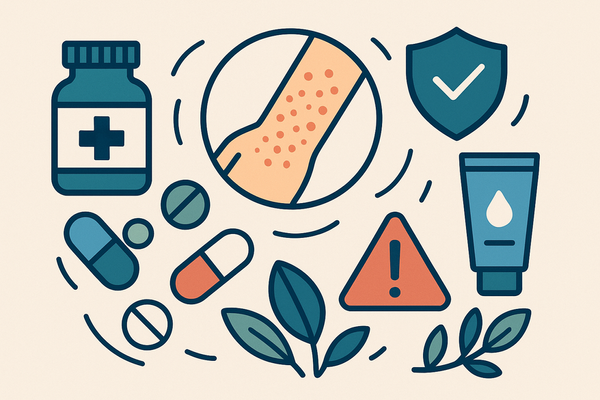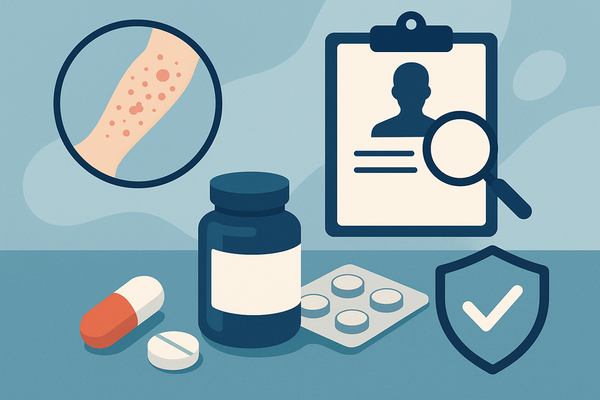Athlete’s Foot Symptoms: How to Prevent & Treat Exercise-Related Rashes
Learn how to identify athlete’s foot symptoms and prevent related rashes like sweat rash under breasts and chafing rash runners with effective strategies.

Estimated reading time: 8 minutes
Key Takeaways
- Athlete’s foot is a fungal infection that thrives in warm, moist environments.
- Intertrigo (sweat rash under breasts) and chafing rashes result from moisture and friction.
- Ringworm can spread via contaminated gym equipment and public mats.
- Preventative powder absorbs moisture, reduces rubbing, and may include antifungal agents.
- Early intervention—through hygiene, proper gear, and targeted products—keeps rashes at bay.
Table of Contents
- Understanding Athlete’s Foot Symptoms
- Sweat Rash Under Breasts
- Chafing Rashes in Runners
- Ringworm from Gym Mats
- Preventative Powder for Friction Rash
- Conclusion
- FAQ
Section 1: Understanding Athlete’s Foot Symptoms
Athlete’s foot, or Tinea pedis, is a fungal infection that develops in warm, damp environments—especially inside sweaty shoes.
Key Athlete’s Foot Symptoms
- Itching, stinging, or burning between the toes
- Redness, scaling, or peeling skin on feet or soles
- Cracked, blistered, or raw skin in severe cases
Hygiene and Treatment Tips
- Wash feet daily with soap and water; dry thoroughly, especially between toes.
- Wear breathable, moisture-wicking socks and rotate shoes to air out.
- Apply over-the-counter antifungal creams or powders like miconazole or tolnaftate at the first sign of rash.
- Avoid sharing towels or shoes; wear sandals in public showers and locker rooms.
- For persistent cases, consult a healthcare provider for prescription treatment.
For an in-depth guide on fungal rash symptoms beyond the feet, visit our detailed resource.
To quickly analyze persistent rashes, try the Skin Analysis App:

Sources:
Mayo Clinic
Cleveland Clinic
Healthline
Dermathens
Section 2: Sweat Rash Under Breasts
Intertrigo is inflammation in skin folds—often under the breasts—triggered by heat, moisture, and friction.
Preventing Sweat Rash Under Breasts
- Choose the Right Bra
Opt for breathable, moisture-wicking fabrics. - Daily Cleansing
Wash with a gentle, pH-balanced cleanser; pat dry or use a cool air dryer. - Use Absorbent Barriers
Place talc-free pads or a light layer of preventative powder under the fold. - Apply Barrier Creams Early
Use zinc oxide or petroleum-based creams at the first sign of redness. - Seek Medical Advice
If rash spreads, itches intensely, or shows infection signs, see a dermatologist.
Source:
Healthline
Section 3: Chafing Rashes in Runners
Chafing occurs when skin repeatedly rubs against fabric, leading to irritation—common on thighs, nipples, and underarms.
Preventing Chafing Rashes
- Seamless, Moisture-Wicking Gear
Choose synthetic blends with flat seams. - Apply Lubricants
Use petroleum jelly or anti-chafing balm before runs. - Use Preventative Powder
Lightly dust high-friction areas before dressing. - Rotate and Wash Clothing
Clean sweaty gear after each use to remove salt and bacteria.
See additional tips on thigh rashes.
Post-Run Care
- Gently cleanse the area with mild soap.
- Pat skin dry; avoid rubbing irritated spots.
- Apply a soothing emollient or barrier ointment (zinc-based creams).
Sources:
Runner’s World
Healthline
Section 4: Ringworm from Gym Mats
Ringworm (tinea corporis) appears as round, red, scaly patches and spreads easily through contaminated surfaces.
Preventative Protocols
- Disinfect Mats and Equipment
Wipe surfaces before and after workouts with an EPA-approved disinfectant. - Use a Personal Mat
Carry your own yoga or exercise mat to limit shared contact. - Wear Protective Clothing
Long sleeves or leggings reduce skin-to-mat exposure. - Maintain Post-Gym Hygiene
Shower immediately after sessions; use antifungal soap and launder clothes.
If you spot a ring-shaped rash, apply topical antifungal creams (clotrimazole) and keep the area covered until clear.
Source:
CDC
Section 5: Preventative Powder for Friction Rash
Preventative powder absorbs moisture and creates a friction-reducing barrier; many formulas include antifungal agents.
Key Ingredients
- Absorbents: tapioca starch, cornstarch
- Skin Soothers: zinc oxide, colloidal oatmeal
- Optional Antifungal Agents: miconazole, tolnaftate
How to Apply
- Clean and dry target areas (feet, under breasts, inner thighs, groin).
- Dust lightly for an even, thin coat.
- Dress as usual; reapply during long workouts if needed.
Use powder across scenarios: between toes (Section 1), under breast folds (Section 2), on thighs (Section 3), and for general dryness near gym mats (Section 4).
Sources:
Dermathens
Healthline
Conclusion
Consistency in hygiene, the right apparel, and targeted products form the pillars against athlete’s foot and related rashes:
- Wash and dry thoroughly every day.
- Wear breathable, moisture-wicking gear.
- Use preventative powder to keep skin dry and friction-free.
- Disinfect shared equipment and minimize direct contact.
- Act quickly at the first sign of redness or itching.
Early intervention ensures low discomfort and high performance. If rashes persist or worsen, consult a healthcare professional for prescription care.
Learn more about preventing heat rash with everyday habits.
FAQ
- What powder is best for preventing friction rash?
- Choose a talc-free powder with absorbents like tapioca or cornstarch and skin soothers such as zinc oxide. Optional antifungal agents add extra protection.
- How long does athlete’s foot treatment take?
- Over-the-counter antifungals typically require 2–4 weeks of consistent application. Severe cases may need prescription treatments.
- Can I use preventative powder under the breasts?
- Yes. Dust under the fold before putting on a bra to reduce moisture and friction, helping to prevent intertrigo.
- Is it safe to share my exercise mat?
- Sharing mats increases ringworm risk. Use your own mat or cover communal mats with a clean towel and disinfect before use.





